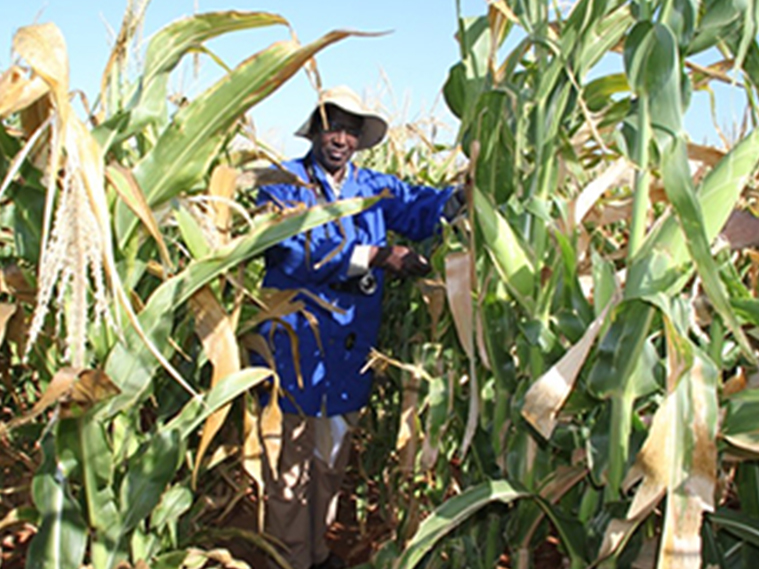By Dr. Daniel Kyalo Willy and Dr. Munyaradzi Jonga
Africa has been packaged as the next frontier of economic growth due to its centrality in the global investment agenda. Agriculture is arguably the most important vehicle to realising this goal.
For this ambitious plan to succeed, the development of the continent’s agriculture sector needs to receive the attention it deserves. This is because most economies in Africa still depend heavily on the Agriculture sector for income generation, employment of the rural population, and production of raw materials and it will remain central in the continental development agenda.
Agricultural experts agree that technology must be at the center of driving the much-needed transformation in the sector.
In recent years, African farmers have been making incredible progress and they can become even more productive and profitable with the right technologies, tools, and knowledge.
But as these farmers are increasingly adopting innovations, increasing productivity, and driving progress across economies, other challenges, among them low access to technologies threaten these gains.
Accelerated adoption of agricultural technologies is therefore critical in transforming African agriculture into an engine of economic growth that will have benefits far beyond the farm sector. Scientists confirm that Africa is making progress in the adoption of new agricultural technologies, but much remains to be done.
The slow pace of adoption of agricultural technologies poses the crucial question, why do most of the available proven technologies record very low adoption in Africa? Why is Africa a slow adopter of technologies?
To help unpack this puzzle, AATF hosted a discussion on this important topic about the speed at which African farmers are taking up new improved crop varieties and other supporting technologies such as agricultural mechanization and digital agriculture innovations on the Cornell Alliance for Science (AfS) Live platform. Held in September, the discussions also suggested actionable steps on how to improve technology adoption in Africa.
Key among the drivers of technology adoption is the presence of an enabling policy and regulatory environment, farmer and farm circumstances, and other market drivers that influence access to technologies, commodity markets, agro-inputs markets, extension services, and affordable credit by farmers.
The policy environment can be a deal-breaker in determining whether a technology would be adopted or not. Long processes of variety testing, registration, and release, caused by prohibitive regulations for releasing new varieties to the market, inadequate public investment in the agriculture sector, and presence of counterfeit inputs in the market are issues afflicting the sector that must be first sorted out.
Agricultural transformation is within Africa’s reach. The farmers can improve their productivity, increase their wealth and health, and continue the path of progress if they have access to the right mix of farming innovations.
This calls for support from African Governments to ensure that laws and regulations facilitate farmer access to the technologies and allow them to grow their yields, deal with risks associated with poor weather, pests and diseases and get maximum returns from their marketed produce. Another key factor that can also play a role in technology adoption among farmers is their individual attributes such as age, gender, socio-cultural context, approach to dealing with risk, and farm resource endowment.
Consequently, there is need for strategies and programmes in agriculture that are sensitive to the farmer’s circumstances. For example, developers of agricultural technologies need to address the needs of women, the youth, and the aged so that technologies are not discriminatory but will benefit all.
Importantly, there is need to amplify the voices of farmers to reach policymakers to express their desires for agricultural technologies. But since smallholder farmers are fragmented with inadequate bargaining power to influence enterprise-specific policies and to promote technology linked to the market system, there is a need for deliberate policies that facilitate better coordination and formation of collective action initiatives among farmers.
At the center of the technology adoption journey, is ensuring the technology portfolio being offered can enable farmers to deal with enduring challenges of pest and diseases, climate change, and productivity.
Faster adoption by farmers of products that provide solutions to these challenges can go a long way towards helping them improve yields at the farm level. In addition to addressing farmer needs, the products should be designed to satisfy the market requirements to ensure that the products emanating from these technologies are readily accepted by processors, consumers and other players in the market. They should also help to improve the health and nutrition of consumers.
But why would anyone care about the question of technology adoption now?
The continent has been lagging in technology adoption and is now doing a ‘catch-up’ with other regions across the globe to address agricultural challenges facing African farmers. Utilizing agricultural technologies and tools is a priority for over 200 million farmers engaged in the agriculture sector in Africa to bolster their productivity. On the other hand, there are a number of technologies either recently released or in the product development pipeline that would bring great value to Africa’s agricultural development.
For this to happen, there is a need for concerted efforts across the value chain to boost technology adoption. Public and private sector players such as seed companies who create awareness among the farmers on technologies need to work together towards enhancing farmer access to the right technologies in a timely and effective manner.
Dr. Munyaradzi Jonga is the seed production manager and Dr. Daniel Kyalo Willy, the program officer, TAAT Policy Enabler, at AATF.



















































































